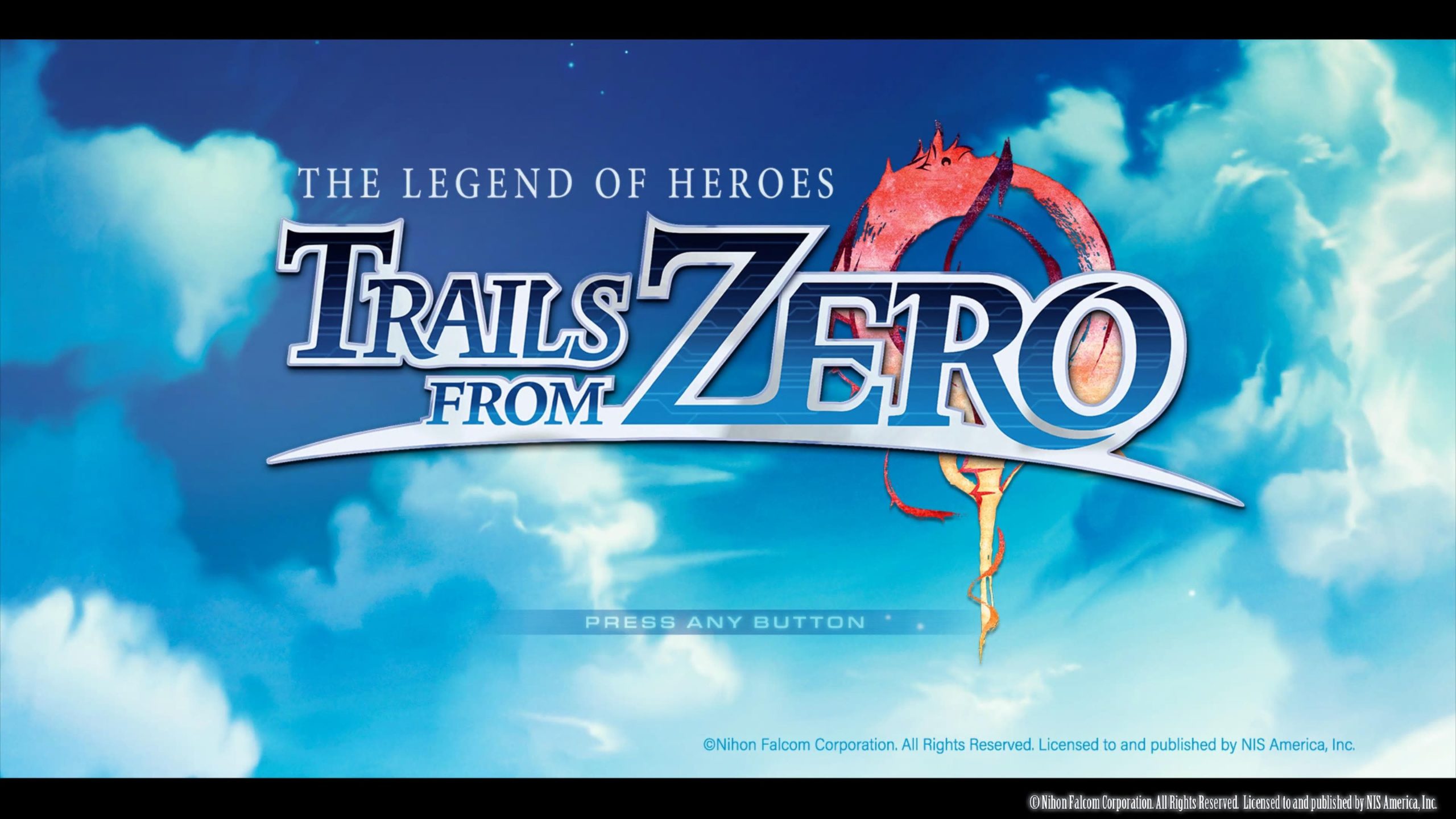Trails from Zero is a classy old-school JRPG that still holds up by today’s standards
- Developer: Nihon Falcom
- Publisher: NIS America
- Release date: 27th September 2022
- Genre: JRPG
- Platforms: PlayStation 4, Nintendo Switch, Windows PC
- Reviewed on: PlayStation 5 (via backward compatibility)
- Game Supplied by: Publisher
Legends of Heroes: Trails from Zero Review
Legend of Heroes: Trails from Zero, was originally released on the PlayStation Portable (PSP) back in 2010. The PC and Switch have been treated to a visually enhanced version, but over on PS4, we’re limited to the same updated version released in Japan a while back. It could be that they didn’t want to invest time and money creating a new version for a limited audience on PS4 or there were licensing issues at play, but either way, this PS4 version is the most basic of the PC, Switch and PS4 releases, amounting to what is essentially a minor bump in resolution.
There are many console gamers who will have only been introduced to the Legend of Heroes franchise via the Trails of Cold Steel series. As the Legend of Heroes games have an overarching story linking them all together, it was a little frustrating having to play the latest Trails of Cold Steel series first, as it references events from earlier in the story’s timeline. Only those that had played those games could fill in those massive plot holes. Thankfully, NIS America and Nihon Falcom are beginning to fill in those missing holes by re-releasing some of the old games on modern consoles. The first is this game, Legend of Heroes: Trails from Zero, and sometime in 2023, it will be followed up by Trails to Azure.
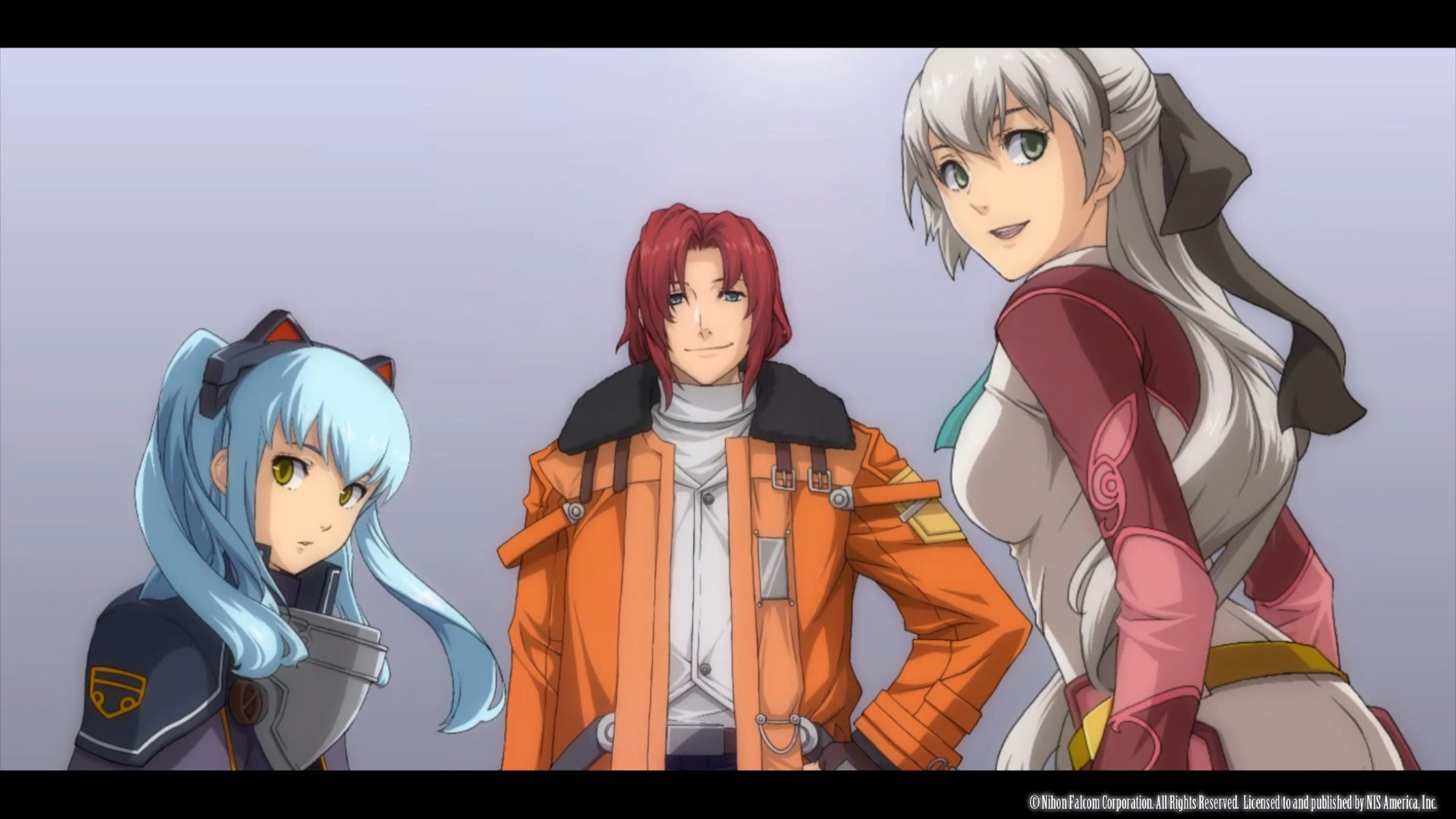
The story is a simple buddy cop saga. Crossbell City’s Police Department is having residents lose faith in them, as the local Bracer Guild is looking after residents’ requests far better than the Police are. The Special Support Section (SSS) decide to gather a ragtag bunch of kids to form their own odd job group to try to win over the faith of the residents, but frankly don’t expect the group to do anything more than fail.
With their backs to the wall even before they have begun, and a Police Department apathetic towards them, the group sets off to try to make a difference. Beginning by tackling the local mafia, their journey has them stumble across a much bigger conspiracy that will push the group to the limit. It’s a very engaging, rags to riches, buddy cop story. No one believed in them, other than themselves, and in setting out to prove their own capabilities, they won over the heart of the nation.
Unlike Legend of Heroes: Trails of Cold Steel IV, which had a whopping and overwhelming cast of 39 playable characters, here in Trails from Zero, you have just a handful. The main group is just four, but other characters come along at various points to join you. As the game has far fewer playable characters there is a laser focus on not only each of the members’ backstories and progression but also their abilities and playstyle. Less is most definitely more!
Get ready for long periods of reading though, as the game has not been localised into English, and only has Japanese audio with English text bubbles. To make this a little worse, there is no auto-scroll feature, so the player has to press a button each time to move the conversations along. There are at times, nearly whole hours of nothing more than exposition and conversations, which can and does get a little tedious at times. However, pay attention, as making the effort to take it all rewards the player at the end of the game.
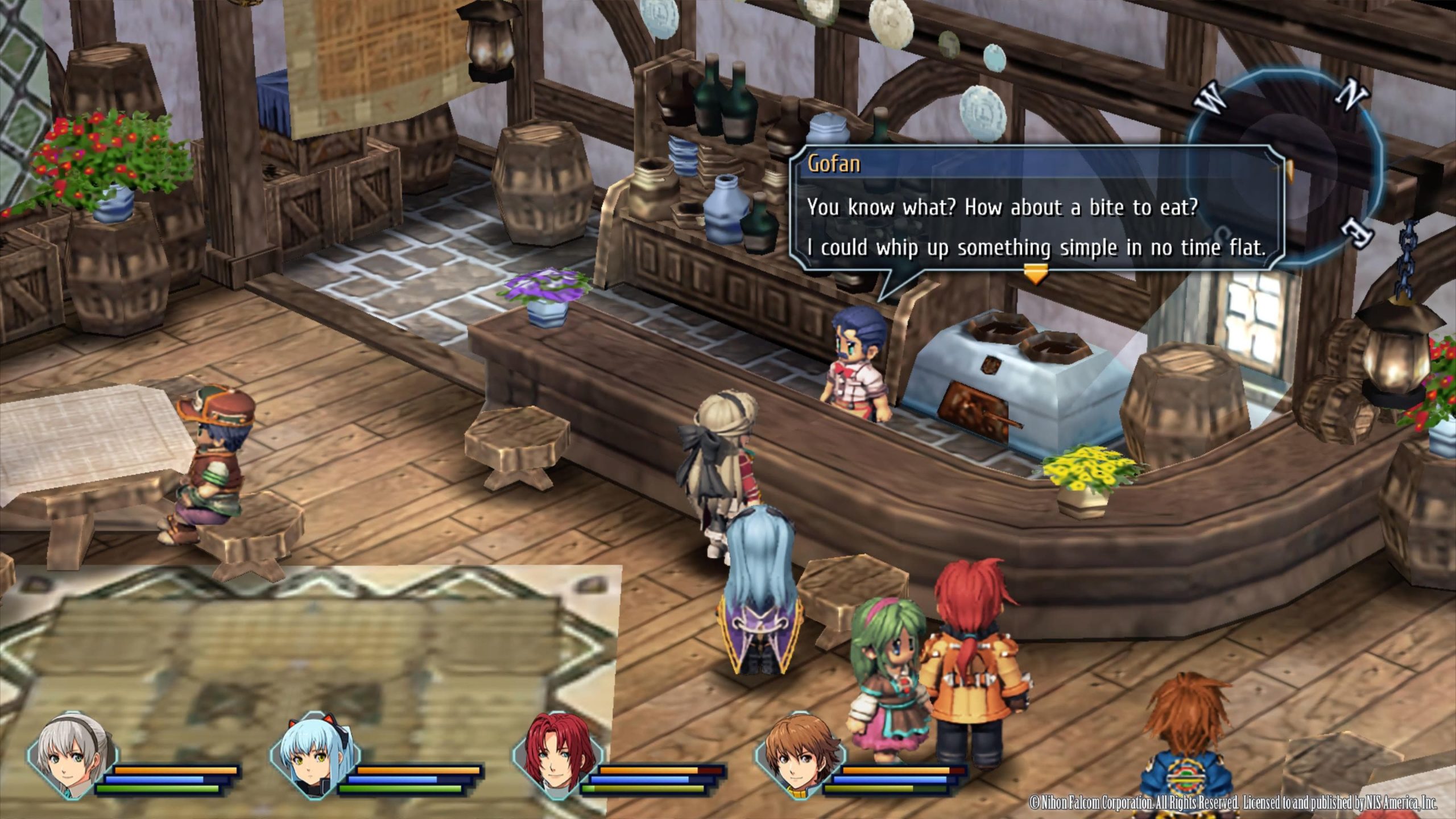
It was a wholly excellent experience watching and listening to each of the party members grow from nervous first-time recruits to badasses. Their doubts, fears and backstories stick with you along the way and you as the player feel that you grow with them, as the narrative and dialogue pull you through too. In fact, the story and excellent writing are one of the best aspects of the game.
What also makes the dialogue in Trails from Zero interesting is that the narrative is never too overbearing or complex, but each character also has their own unique characteristics. Each line is delivered in a bubble box, with a 2D character-still highlighting who is talking. It’s nothing groundbreaking but it at least broke up the visual style a little.
Trails from Zero starts within the city of Crossbell. You and your party can freely explore the large city, and with many shops, buildings, commerce, residential areas and your office base, it becomes your rather large hub world to resupply and upgrade before setting out.
When leaving the city, or indeed in parts of it, you will engage in combat which is the second biggest feature of the game. Combat is a classical turn-based system that is as elegant now as it was back in 2010.
Each character has an area of reach highlighted by a grid system, and you will have to move to get within range of enemies to hit them with your handheld weapon: For Lloyd, it’s a pair of up close police batons, Elie has a handgun, Tio has a magical staff, and Randy has a stun halberd which is a powerful hitting staff.
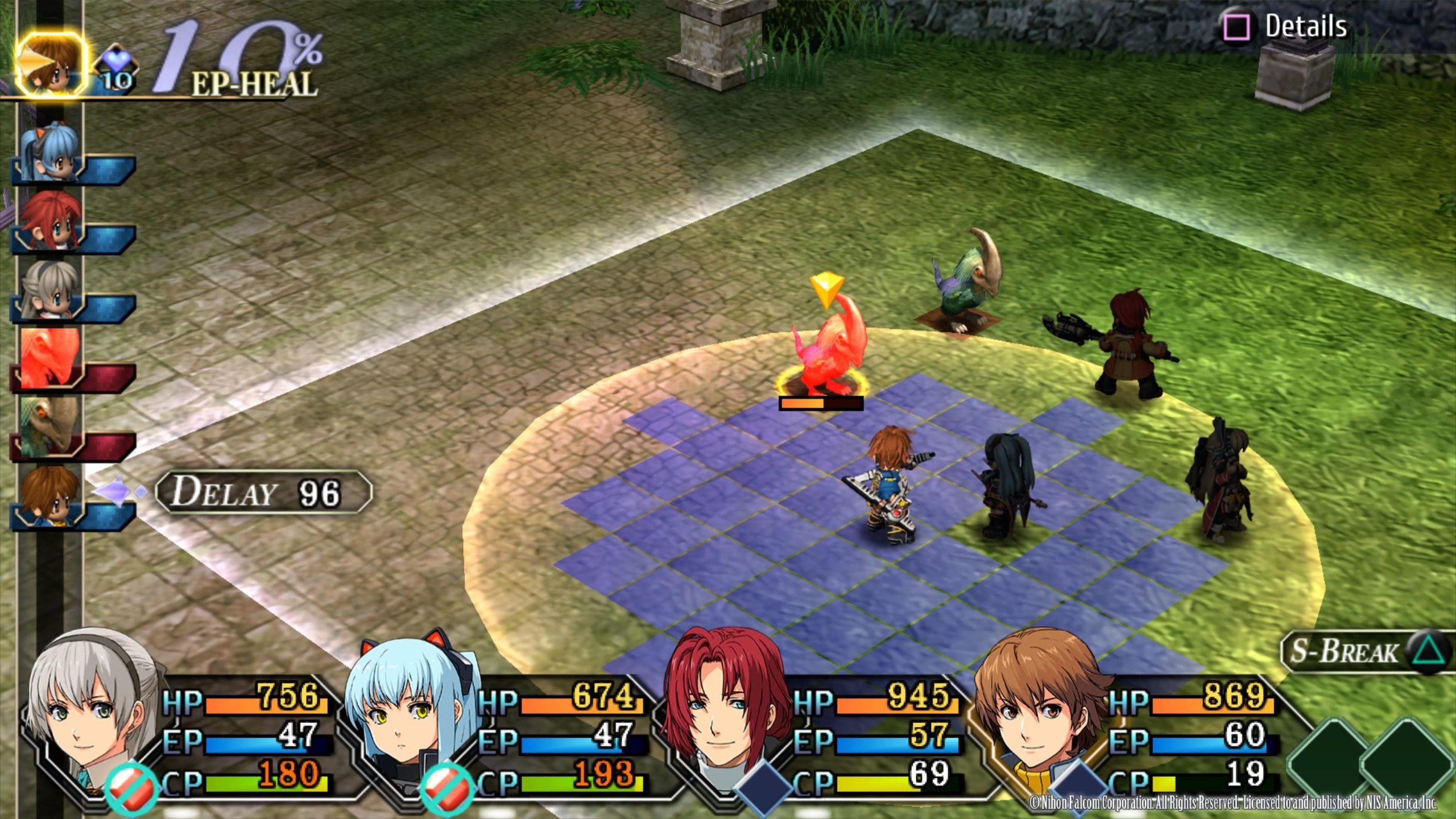
Each member also has a Police issued Arcus (like a Star Trek Communicator) that when upgraded can open slots to put different types of crystals in that will then have different effects or new types of elemental attacks, stat buffs, or healing. As enemies are all weak or strong to different elements, knowing the correct crystals to put in place and what spells each character can cast to take advantage of weakness helps in battle. These spells have limited uses drawing from the character’s EP scale; Once the EP gauge is empty or low, you won’t be able to cast anything until you have replenished it.
The next form of attacks are each character’s individual Craft abilities. There is a maximum of 200 CP points available per character, and although crafts are more expensive than spells they can be used instantly. The CP points can be replenished in the field by landing attacks or receiving damage.
The last main attack is called an S break. If a character has 100 cp points or more, they can launch a special attack that can be triggered even before their turn in the order of gameplay, that will wipe all of their remaining CP points out but land a powerful blow or, in the case of Elie, maximum party heal. If a player instigates a character’s S Break when that character has a full gauge of 200 CP, the effects are even more powerful.
Combat in Trails from Zero is a wonderful mix of dealing with the enemies and managing your team’s resources, whilst trying to save as much CP for any boss battles or mini-boss enemies you may face. Being able to trigger an S break can be a turning point in a battle if you are losing. Combining all of this with elemental effects, means that there is always a lot of experimentation and variation within each battle.
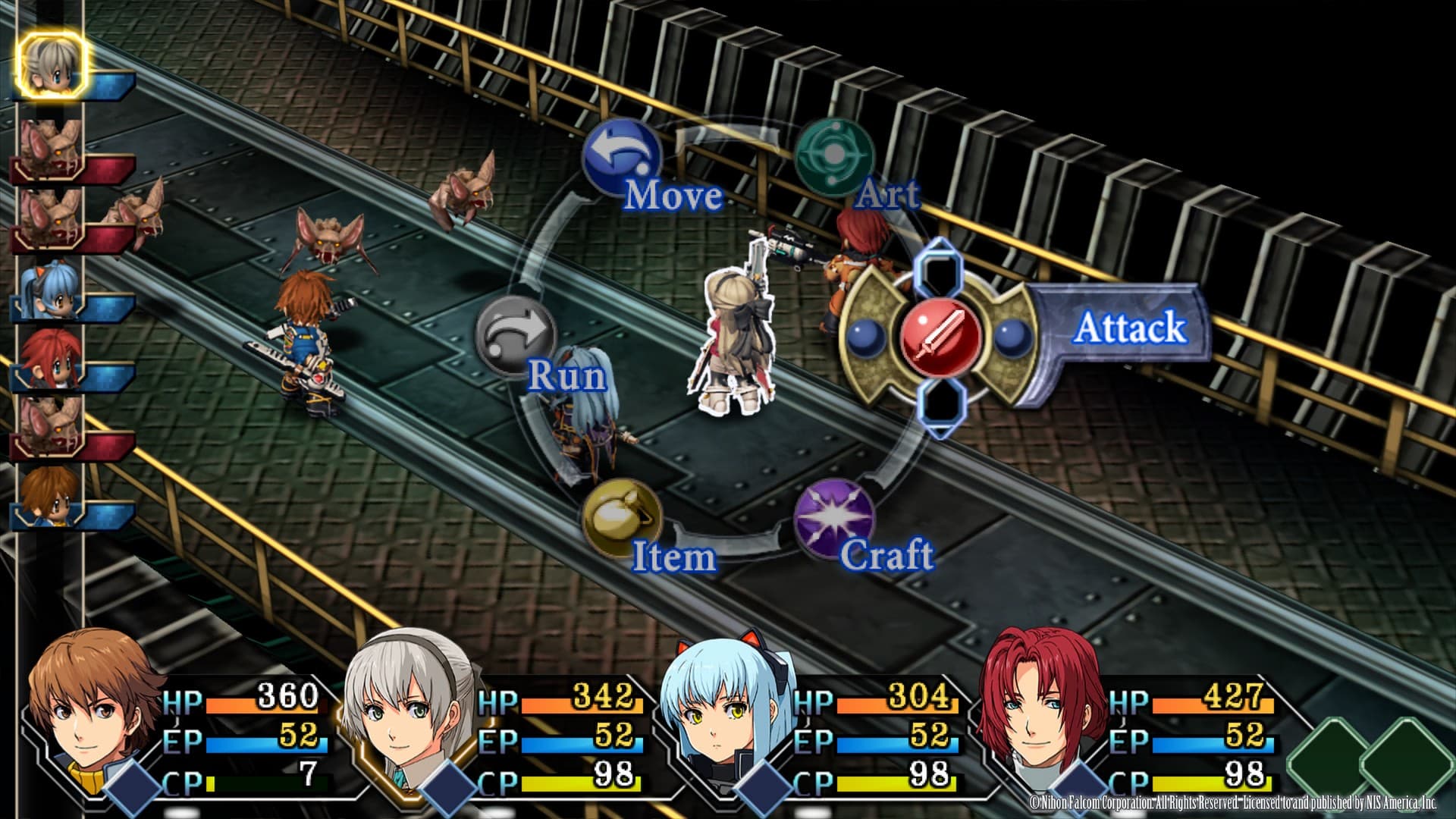
As you are walking through the field, you can engage in battles by walking up to an enemy, however, if you can stun an enemy from behind and then engage, the party starts the battle with an advantage. I started playing the game with Lloyd as the lead and as he uses a close-range melee weapon, I found it tricky to surprise the enemies. When I switched to Elie as the party leader, her ranged gun could hit enemies from afar to stun them. Suddenly pretty much every encounter began with a party advantage that included a team rush. Team rush was another mechanic that, as the name implies, allowed the team to get multiple hits at once. This pretty much wiped out all the normal opponents in one go, but although it made clearing the field of enemies a lot easier it also made battles a little too simple and easy.
The RPG aspect of Trails from Zero is deep and rewarding. Scattered around the world are shops, chests and items that when combined will allow you to upgrade an individual’s Arcus to be more adaptable, but also includes items to wear or weapons. Players can also find or buy ingredients to use for cooking that have many benefits other than just a health increase. There are different types of in-game currency: Mira is the local coin to buy items, but elemental stones are needed to unlock different types of slots or crystals. There is also a third element called U material that is rarer but collecting enough of it will allow the user to modify and improve weapons.
As each character had different traits, it was fun to build them further to lessen any weaknesses. For example, Tio had a low defence rating, so any items I could find to improve that, I would slot her way. Other players hit hard but are slow so I built them to have extra speed.
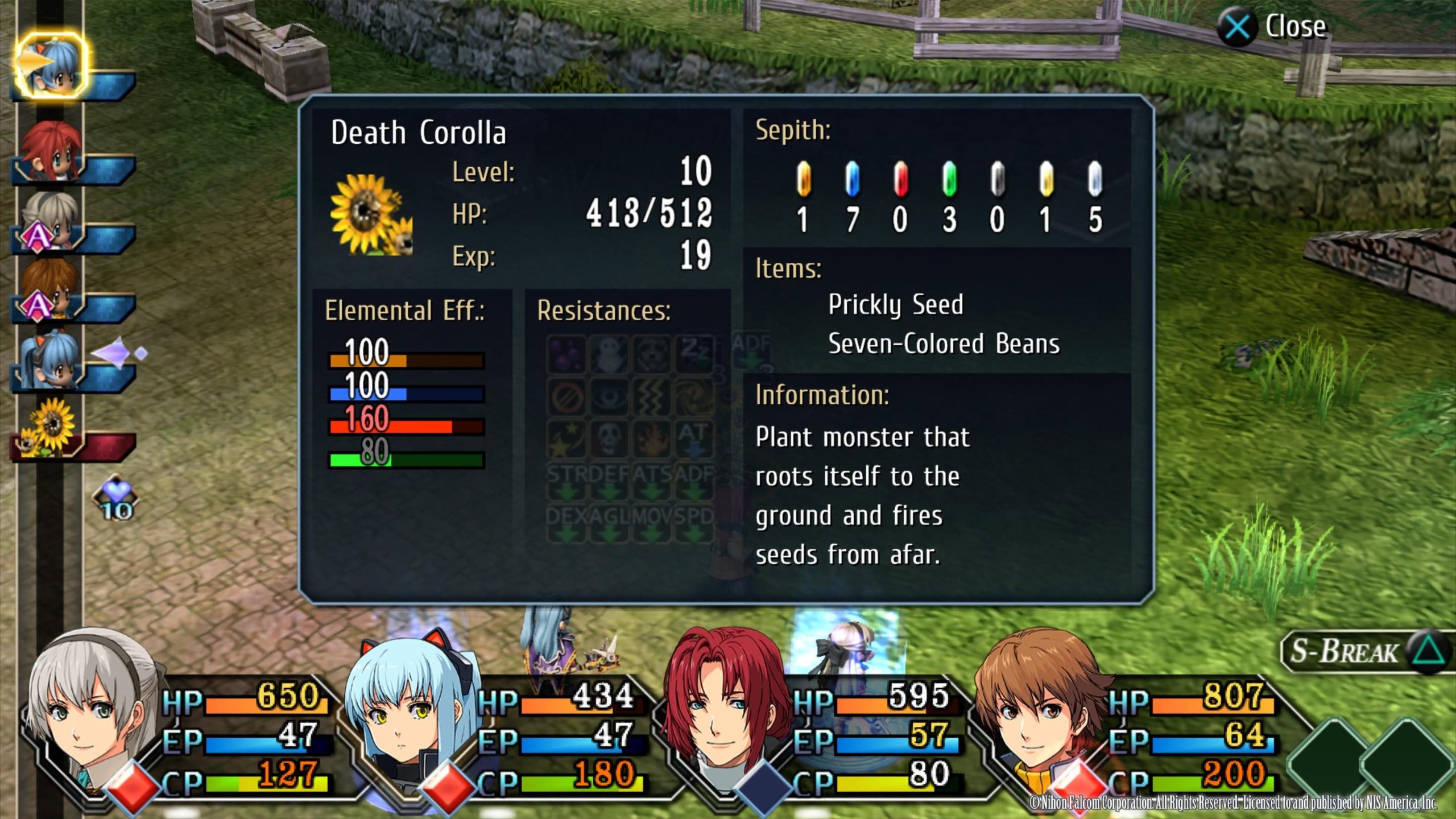
It is said that if you keep an item of clothing for long enough, at some point it will become fashionable again. For a game made in 2010, the art appears to be right in style with the current fashion. The world is colourful but not very detailed, with very blocky architecture and flat textures, alongside basic sprite-like characters that you move around. The style is very much similar to the awesome aesthetic of Octopath Traveller. The game looks like a modern game even though it’s actually old school. The only visual clues you get as to the game’s actual age is that the screen to load previous game saves and some of the cutscenes look distinctly lower resolution than the rest of the game. If they had sharpened up those aspects, you would have never known.
However, the game’s overall presentation is clear, easy to read and of high quality. One can not overstate how a simple thing like being able to clearly read the game’s text can encourage the player to keep playing a game that is only voiced in Japanese.
Lastly, the game’s audio is sufficient but not spectacular. The in-game music was actually quite good with various pleasant tunes to fill the world with sounds, which is most helpful when you are wandering around doing some very mundane things at times. The in-game effects aren’t hugely great, but the voice acting was excellent and even though it was completely delivered in a foreign language that I couldn’t understand, I could still pick up the gravitas and nuances of the situation through how the acting was coming across.
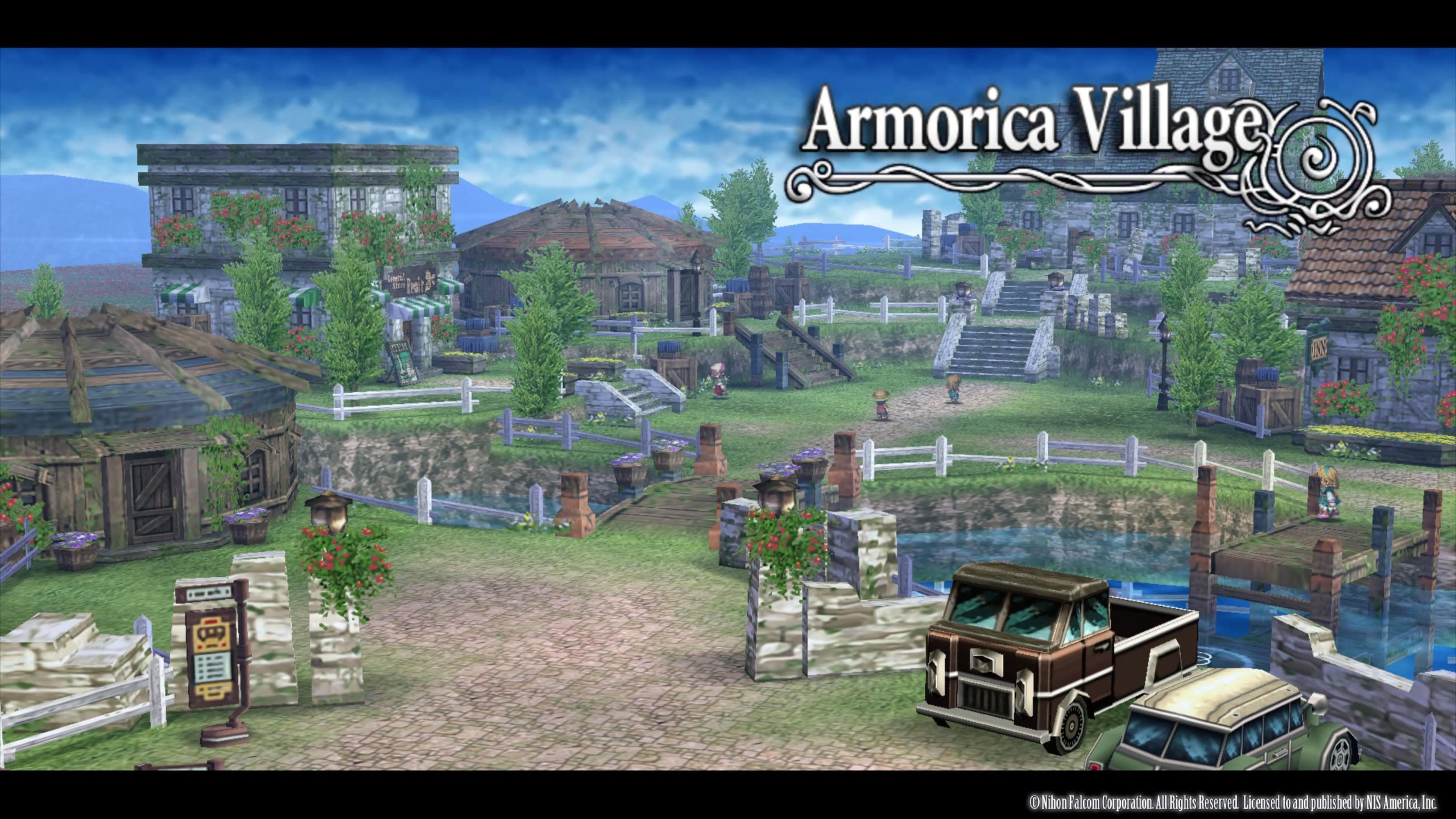
Even though there is a lot to get your head around, if you’ve played the Cold Steel series then mastering the mechanics will be second nature, but for new players, it is still approachable. The only real issue I had with the game was that as there is a huge amount of text to read an auto-scroll function would have benefitted the game immensely. This is exacerbated by the fact the game spent too long on one aspect. When story dialogue was delivered, I found these moments often went on for a long time. I fell into the trap of thinking I’ll save the game at the next opportunity, only to have to keep playing and listening to chat for another 30 minutes before that save point arrived.
Equally though, the combat sections went on for too long. Instead of only having a few sections of the map to traverse, there were many to get through for an objective. If you were not used to the game and chewed up your resources in the wrong way as I occasionally did, then got to a mid-point level with nothing left, there was no easy way to go back, regroup and restock your items.
There were also a few mechanics that the game doesn’t make clear. At the beginning of the game you are exploring Crossbell for hours, and at times have to find an individual at a specific house or building. If I had known there was a map that shows the names of these buildings it could have saved quite a lot of aimless wandering, as I was trying to memorise where each building was.
This could have all been remedied with probably the biggest omission I didn’t know I needed until it wasn’t there, that being a waypoint for the next mission! Not knowing where the next destination was meant I constantly had to read the notes to find out where I had to go, and then find it on the map. Later games in the series have waymarkers and even highlight side-missions too, but not having it here became stressful. An example would be one quest that has you go to a certain small footbridge in the southeast of the city. Finding a shop is one thing, but finding a bridge that actually looked like a path hidden away in the corner of a map wasn’t pleasant.
Another time I was tasked with having to find a specific table in a specific building to trigger a meeting. With nothing on the map to highlight where this was, I had to pay attention to what was being said at all times. This leads to another issue. Let’s be real, we don’t always have the time to play games for hours on end, so leaving the game and coming back to it, and trying to remember where you had left the game with no hint other than to look through notes and the game summary to pick things up was stress I really didn’t need. All could have been avoided with a simple waymarker!
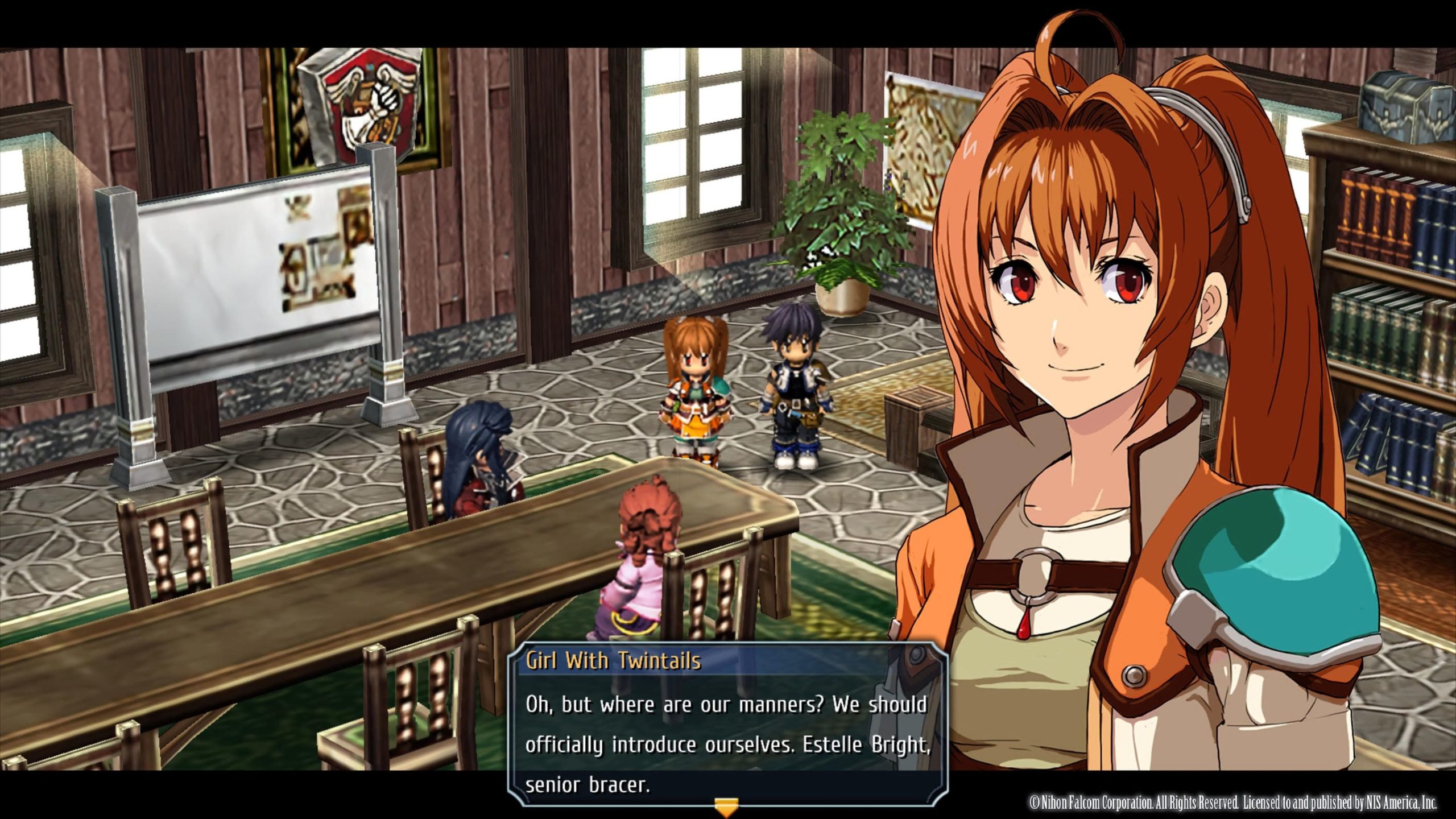
Summary
With nothing more than a simple HD makeover, Legend of Heroes: Trails from Zero proves that the classic structure of a great story and characters, together with an elegant, yet deep, turn-based combat system, can still mean a twelve-year-old game is as enjoyable now as it was when it was originally released.
Being able to play a classic game in the Legend of Heroes series that fills in the story and plot holes of the overarching storyline in such an enjoyable manner was great fun, but it still holds its own as a standalone experience. If they had added a few modern quality-of-life features like waypoints or slightly clearer instructions, this could have been an even better improvement.
